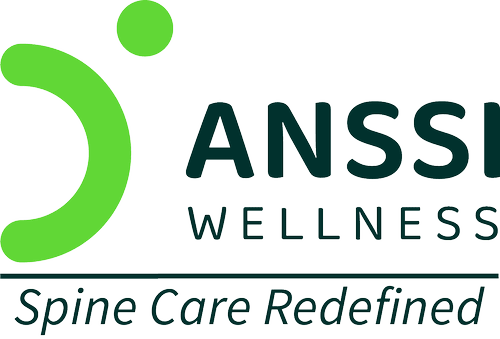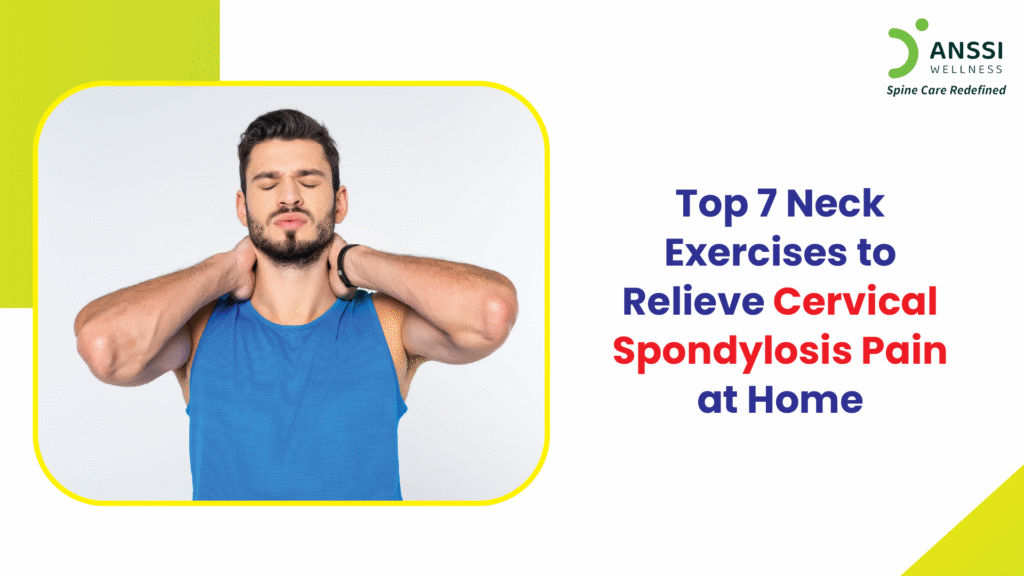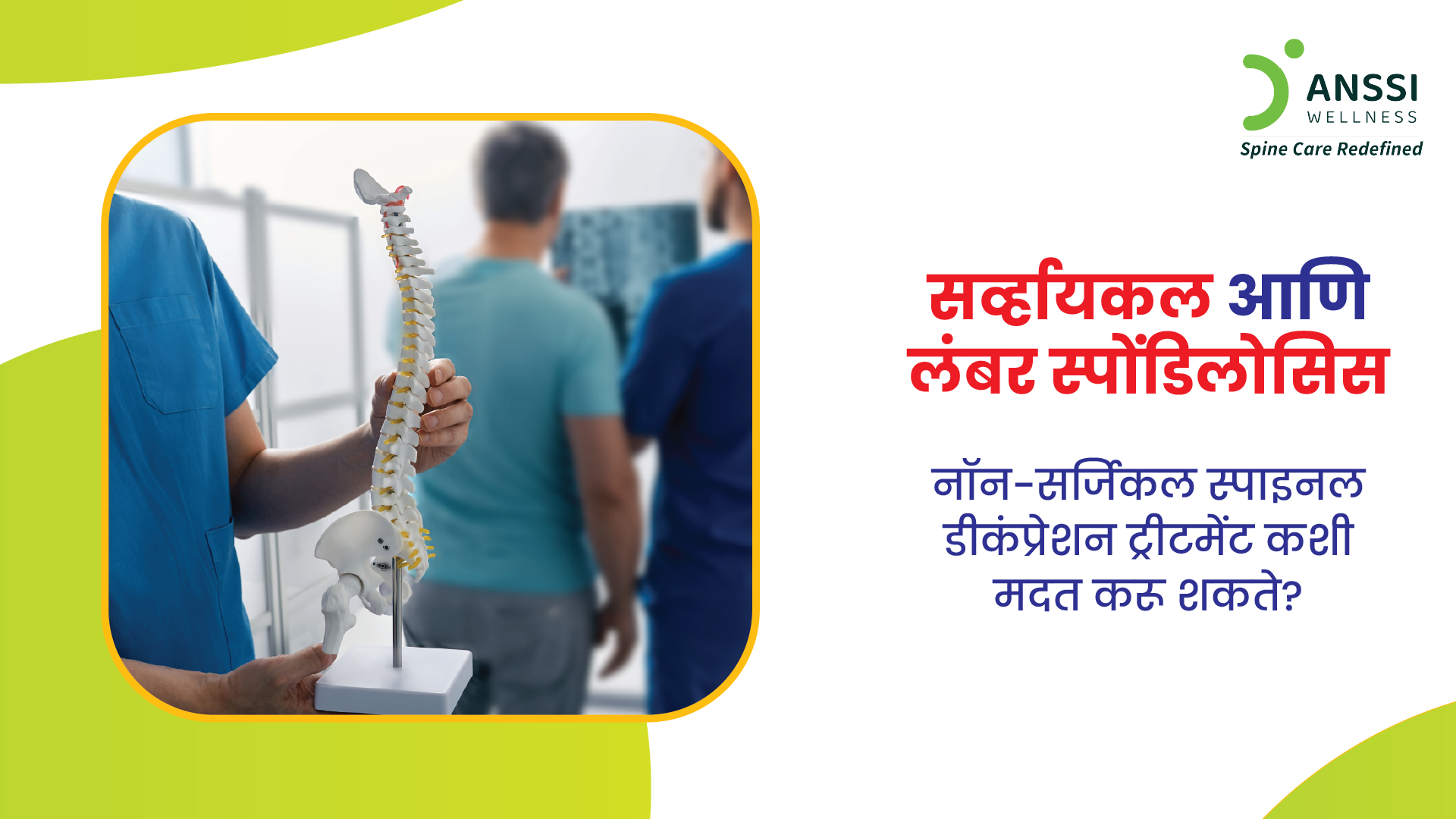Cervical spondylosis, also known as neck arthritis, is a common condition that affects millions of people, especially with age. It is caused by the degeneration of the spinal discs and joints in the neck. This can lead to stiffness, neck pain, reduced mobility, and in some cases, nerve-related symptoms like numbness or tingling.
The good news is that with simple and regular neck exercises, many people can manage cervical spondylosis symptoms effectively from the comfort of their homes, without the need for surgery or medication.
Why Exercises Matter for Cervical Spondylosis
Daily movement is essential for a healthy spine. Gentle neck exercises help reduce stiffness, improve blood circulation to the cervical spine, enhance flexibility, and strengthen supportive muscles. Over time, consistent practice can improve posture, decrease pain, and restore range of motion. Unlike quick-fix medications that only mask symptoms, these exercises address the root cause by retraining the muscles and joints to function more efficiently.
Safety First: Before You Begin
Before starting any exercise program, it’s important to proceed with caution.
- Always perform movements slowly and avoid any jerky or forced actions.
- If you experience sharp pain, dizziness, or worsening symptoms during an exercise, stop immediately.
- It’s also advisable to consult with a physiotherapist or spine specialist if you have severe cervical spondylosis, herniated discs, or nerve compression.
Top 7 Neck Exercises for Cervical Spondylosis Relief
These exercises are gentle, require no equipment, and can be performed at home. It should be your goal to do them daily, spending about 15 minutes per session.
1. Chin Tucks
Purpose: Improves neck posture and reduces forward head position.
How to Do It:
- Sit or stand upright.
- Gently pull your chin straight back, as if creating a double chin.
- Hold for 5 seconds and relax.
- Repeat 10 times.
Tip: Avoid tilting your head up or down.
2. Neck Tilts (Side to Side)
Purpose: Improves side flexibility of the neck.
How to Do It:
- Sit straight with your shoulders relaxed.
- Slowly tilt your right ear toward your right shoulder.
- Hold for 5-10 seconds and return to centre.
- Repeat on the left side.
- Do it 5 more times on each side.
Tip: Do not raise your shoulder; only move your neck.
3. Neck Rotations
Purpose: Increases rotational movement of the neck.
How to Do It:
- Sit or stand with good posture.
- As much as it feels comfortable, slowly move your head to the right.
- Hold for 5 seconds, then return to centre.
- Repeat on the left side.
- Do it 5 more times on each side.
Tip: Move smoothly and avoid sudden turns.
4. Shoulder Rolls
Purpose: Loosens tension in the shoulders and upper back.
How to Do It:
- Sit or stand with relaxed arms.
- Roll your shoulders up, back, and down in a circular motion.
- Do 10 rolls backwards and then 10 forward.
Tip: Coordinate with deep breathing for added relaxation.
5. Isometric Neck Press
Purpose: Builds strength without movement.
How to Do It:
- Place your palm on your forehead.
- Press your head gently into your hand while resisting the movement.
- Hold for 5 seconds.
- Repeat on both sides of the head and the back of the head.
- Do it 5 more times for every position.
Tip: Keep your neck still and only apply pressure.
6. Levator Scapulae Stretch
Purpose: Targets deep neck muscles that can cause stiffness.
How to Do It:
- Sit on a chair and grab the edge with one hand.
- Turn your head 45° to the opposite side and look down.
- Use your opposite hand to gently pull your head down.
- Hold for 20-30 seconds.
- Repeat on both sides.
Tip: Keep the stretching shoulder down and relaxed.
7. Upper Trapezius Stretch
Purpose: Relieves upper shoulder and neck tightness.
How to Do It:
- Sit straight and place your right hand on the left side of your head.
- Gently pull your head toward your right shoulder.
- Hold for 15-20 seconds.
- Repeat on the left side.
- Do 3-5 times on each side.
Tip: Breathe deeply and avoid twisting your torso.
Additional Lifestyle Tips
Along with exercises, maintaining proper posture during work, sleep, and daily activities is critical.
Here are a few extra tips:
- Use an ergonomic chair with neck support.
- Take frequent breaks from screen time.
- Avoid sleeping on too high or stiff pillows.
- Practise mindfulness or meditation to relieve tension.
When to Seek Professional Help
If the exercises do not provide relief after a few weeks or if your symptoms worsen, it’s important to seek help. Some people may require additional treatments such as spinal decompression, physiotherapy, or ergonomic evaluation. Preventing chronic pain and its repercussions requires early action.
About ANSSI:
ANSSI Wellness focuses on improving the quality of life for patients suffering from spinal issues, aiming to provide relief where other conventional treatments have failed. Through advanced non-surgical spinal decompression treatment, ANSSI is committed to helping patients avoid surgery and recover in a safe, effective, and compassionate environment.
Connect with ANSSI Wellness on LinkedIn, Instagram, and Facebook for expert guidance.



